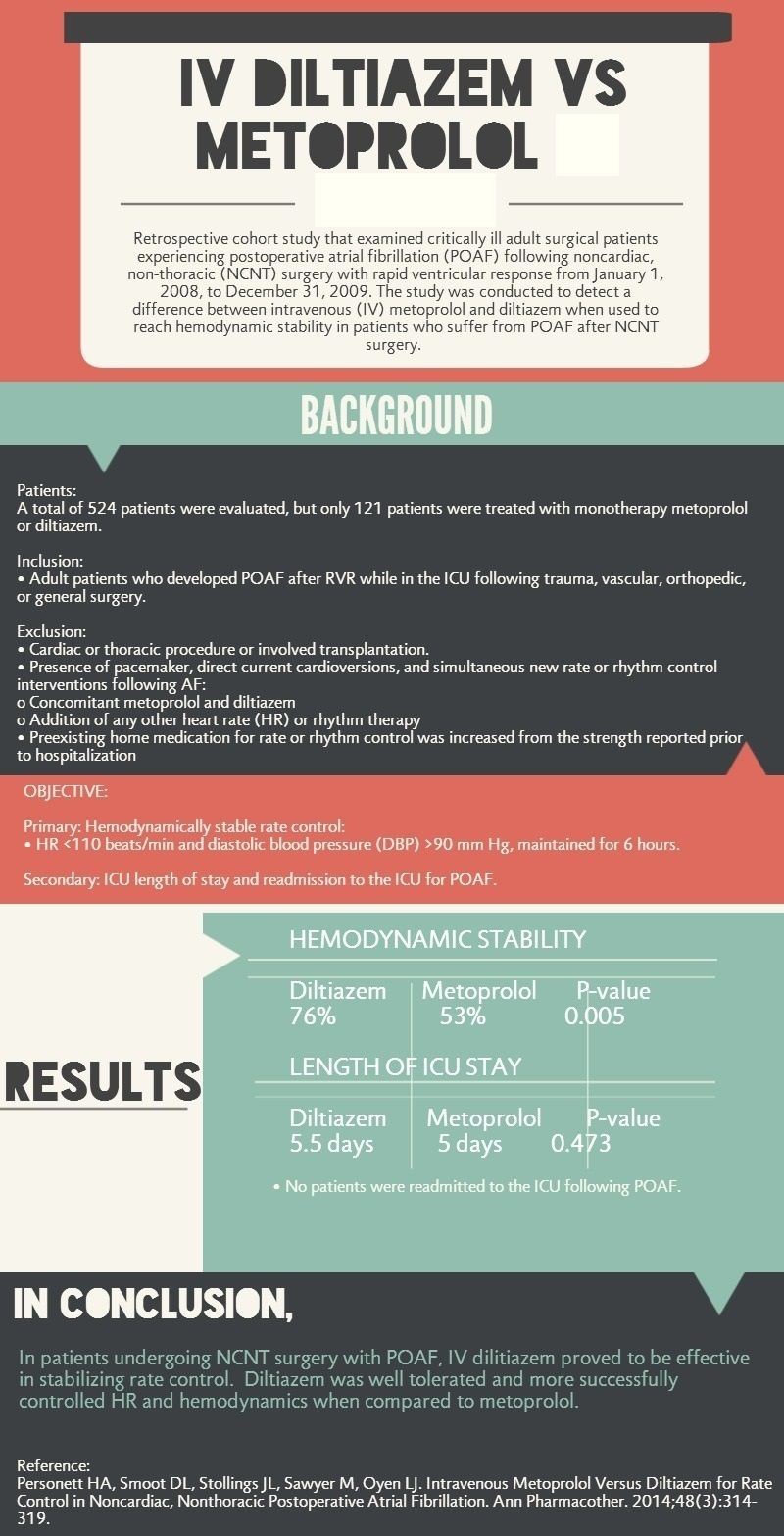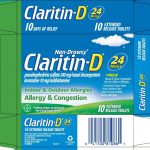
Contents
Metoprolol vs. diltiazem
Metoprolol is a beta-adrenergic blocking agent (beta-blocker) that blocks the action of the sympathetic nervous system. It is used to treat high blood pressure, heart pain, congestive heart failure, abnormal heart rhythms, hyperthyroidism, some neurologic conditions, and to prevent migraine headaches.
Diltiazem is a calcium channel blocker used to treat heart pain, high blood pressure, and abnormal heart rhythms. By blocking the entry of calcium into muscle cells, diltiazem decreases the force and rate of contraction of the heart. It also relaxes the muscles surrounding the arteries, allowing them to widen and reducing blood pressure.
QUESTION
What are the side effects of metoprolol and diltiazem?
Metoprolol
Side effects include:
- Abdominal cramps
- Diarrhea
- Constipation
- Fatigue
- Insomnia
- Indigestion
- Nausea
- Depression
- Dreaming
- Memory loss
- Fever
- Impotence
- Lightheadedness
- Low blood pressure
- Decreased exercise tolerance
- Increased triglycerides
- Bronchospasm
- Cold extremities
- Sore throat
- Shortness of breath or wheezing
Possible serious adverse effects include:
- Slow heart rate
- Raynaud’s phenomenon
- Hepatitis
- Increased insulin resistance
Metoprolol can aggravate breathing difficulties in patients with asthma, chronic bronchitis, or emphysema.
WARNING:
- In patients with existing slow heart rates and heart blocks, metoprolol can cause dangerously slow heart rates, and even shock. Metoprolol reduces the force of heart muscle contraction and can aggravate symptoms of heart failure. In patients with coronary artery disease, abruptly stopping metoprolol can suddenly worsen angina, and occasionally precipitate heart attacks. If it is necessary to discontinue metoprolol, its dosage should be reduced gradually over several weeks.
- Initiation of high-dose extended release metoprolol in patients undergoing non-cardiac surgery is associated with bradycardia, hypotension, stroke, and death. However, long-term therapy with metoprolol should not be routinely withdrawn prior to major surgery. Impaired ability of the heart to respond to reflex adrenergic stimuli may increase the risks of general anesthesia and surgery.
Diltiazem
Side effects include:
- Constipation
- Nausea
- Headache
- Rash
- Edema
- Low blood pressure
- Drowsiness
- Dizziness
Liver dysfunction and overgrowth of the gums may also occur. Diltiazem can cause mildly abnormal liver tests that usually return to normal with discontinuation of the medication. When diltiazem is given to individuals with heart failure, symptoms of heart failure may worsen. Like other drugs for high blood pressure, diltiazem is associated with sexual dysfunction.
What is the dosage of metoprolol vs. diltiazem?
Metoprolol
- Metoprolol should be taken before meals or at bedtime.
- The dose for treating hypertension is 100 to 450 mg daily in single or divided doses.
- Angina is treated with 100 to 400 mg daily in two divided doses.
- Heart attack is treated with three 5 mg injections administered 2 minutes apart followed by treatment with 50 mg oral metoprolol every 6 hours for 48 hours. After 48 hours, patients should receive 100 mg orally twice daily for at least 3 months.
- The dose for congestive heart failure is 25 mg daily initially. Then the dose is increased every 2 weeks to reach a target dose of 200 mg daily orally.
- Hyperthyroidism is treated with 25 to 30 mg by mouth every 6 hours.
Diltiazem
- Adult oral doses for chest pain or high blood pressure range between 120 and 540 mg daily.
- Immediate release tablets are administered up to 4 times a day.
- Extended release formulations are administered once daily at approximately the same time each day and should not be crushed or chewed.
- Injectable forms are used for treating atrial fibrillation, atrial flutter, and paroxysmal supraventricular tachycardia.
What drugs interact with metoprolol and diltiazem?
Metoprolol
- Calcium channel blockers and digoxin can lower blood pressure and heart rate to dangerous levels when administered together with metoprolol.
- Metoprolol can mask the early warning symptoms of low blood sugar (hypoglycemia) and should be used with caution in patients receiving treatment for diabetes.
- Fluoxetine can increase blood levels of metoprolol by reducing breakdown of metoprolol, and increase the side effects from metoprolol.
Diltiazem
- Administration of diltiazem with digoxin can increase digoxin blood levels. Therefore, blood levels of digoxin usually are monitored to avoid toxicity from digoxin.
- Similarly, concurrent administration of diltiazem with carbamazepine can increase blood levels of the seizure medication, and occasionally lead to toxicity.
- Diltiazem increases blood levels of lovastatin, atorvastatin, and simvastatin, possibly increasing the risk of adverse effects.
- Diltiazem may increase blood levels of buspirone, midazolam, triazolam, and diazepam by reducing the liver’s ability to break down and eliminate these drugs from the body, which can lead to toxicity.
- Rifampin reduces the effect of diltiazem by reducing its blood levels to undetectable levels.
By clicking "Submit," I agree to the MedicineNet Terms and Conditions and Privacy Policy. I also agree to receive emails from MedicineNet and I understand that I may opt out of MedicineNet subscriptions at any time.
Are metoprolol and diltiazem safe to use while pregnant or breastfeeding?
Metoprolol
- Safe use of metoprolol during pregnancy has not been established.
- Small quantities of metoprolol are excreted in breast milk and may potentially cause adverse effects in the infant.
Diltiazem
Diltiazem is excreted in breast milk. To avoid adverse effects in the infant, diltiazem should not be taken while nursing.
From
Heart Health Resources
Featured Centers
- What Are the Best PsA Treatments for You?
- Understanding Biologics
- 10 Things People With Depression Wish You Knew
Summary
Metoprolol and diltiazem are used to treat high blood pressure, heart pain, and abnormal heart rhythms. Metoprolol is also used to treat congestive heart failure, hyperthyroidism, and some neurologic conditions, and to prevent migraine headaches. Metoprolol is a beta-blocker and diltiazem is a calcium channel blocker.

